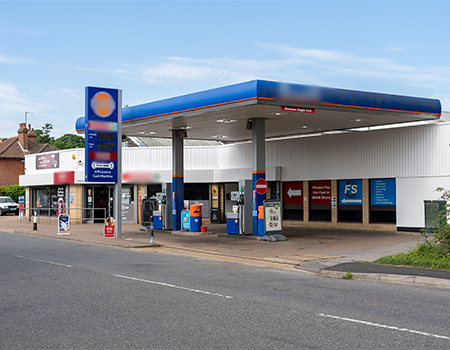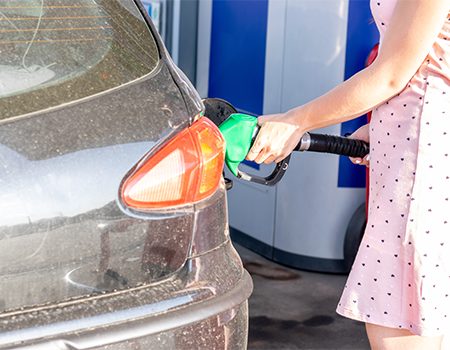Petrol stations, also known as petrol garages or gas stations in some countries, are an essential part of keeping our vehicles moving. But how much do you really know about these familiar pit stops? Buckle up for a ride through some fascinating facts about petrol stations!

What Is a Petrol Station?
A petrol station is a retail outlet that primarily sells fuel for vehicles. The most common types of fuel sold are petrol (gasoline) and diesel, which power the internal combustion engines in most cars on the road today. But petrol stations have evolved to offer more than just fuel.
Many stations now incorporate air pumps, car washes and convenience stores that stock a variety of everyday essentials, from drinks and snacks to toiletries and even hot food. This one-stop-shop approach makes petrol stations a convenient place to grab a quick bite or pump up your tyres while filling up your car.
The History of Petrol Stations
The first commercial petrol station actually has a rather recent history! Believe it or not, it only dates back to 1907 in Germany. Back then, going to a petrol station (or filling station for the Americans) was a far more manual process. Fuel was stored in above-ground tanks, and attendants would pump the fuel by hand directly into your vehicle. Thankfully, technology has come a long way since then.
The story of petrol stations in the UK began in November 1919, when the Automobile Association (AA) opened the very first one in Aldermaston, Berkshire. This pioneering station boasted just a single, hand-operated pump, and motorists were served by AA patrolmen in their full uniforms.
Interestingly, the AA was keen to promote British-made benzole fuel at the time. This fuel, a by-product of burning coal, was seen as a patriotic alternative to the readily available benzole imported from Russia. However, the 1917 Russian Revolution and the rise of the Bolsheviks left a sour taste on trade with that country.
The AA’s initiative to promote domestic benzole proved successful, leading them to open seven more filling stations. By 1923, the UK already had a remarkable 7,000 petrol pumps in operation.
Today, petrol stations are marvels of modern engineering, with fuel stored safely underground and dispensed through electronic pumps for a quicker and more efficient refuelling experience.

How Many Petrol Stations Are in the UK?
With thousands of cars on the road across the country, it’s no surprise that there’s a dense network of petrol stations throughout the UK.
In fact, there are roughly around 8,000 petrol stations, including 24-hour petrol stations, scattered across the UK. The large quantity ensures you’re never too far from a place to refuel your car or even need to wash your car if you’re visiting a petrol station car wash.
How Do Petrol Stations Work?
The inner workings of a petrol station might seem like a mystery, but the core function is actually quite simple.
Beneath the forecourt, where you pull up to pump fuel into your car, lies a hidden network of large underground storage tanks. These tanks hold vast quantities of fuel, usually petrol and diesel, which are delivered by tanker trucks on a regular basis.
Pumps are strategically positioned around the forecourt and connected to these underground tanks by a network of pipes. When you pull up to a pump and select your fuel type, the pump uses electricity to transfer the fuel from the underground storage tanks to your vehicle’s fuel tank through a hose and nozzle.

How Long Does It Take to Refuel a Petrol Station?
While filling up your car typically takes just a few minutes, refuelling a petrol station itself is a much larger operation. Imagine the vast quantities of fuel needed to keep those underground tanks topped up!
Refuelling a petrol station typically involves a dedicated tanker truck delivering thousands of litres of fuel. This process can take several hours, depending on the size of the station’s storage tanks and the volume of fuel being delivered.
So, next time you see a tanker truck at a petrol station, you’ll know it’s playing a vital role in keeping the station operational and our cars on the road.
How Much Fuel Is Stored at a Petrol Station?
The exact amount of fuel stored at a petrol station can vary depending on several factors, such as the size and location of the station.
Stations in busier areas with higher customer traffic will naturally need to have larger storage abilities to meet demand. However, as a general estimate, most petrol stations store fuel in the range of 1200-2950 litres. This ensures they have enough fuel on hand to keep their pumps running smoothly and their customers satisfied.
How Do You Use a Petrol Pump?
Filling up your car with petrol might seem like a straightforward task, but there are a few key steps to follow for a smooth and safe experience:
Safety First
Always turn off your engine and avoid smoking completely while refuelling. Petrol is a flammable liquid, and even a small spark can ignite fumes and cause a fire.
Find the Right Fuel
Open your fuel cap and check your car’s manual or the label near the fuel gauge to identify the correct fuel type for your vehicle. Most pumps are labelled with pictures or octane ratings to help you choose the right fuel.
Pumping Away
Carefully insert the pump nozzle into your car’s fuel tank and squeeze the trigger to begin pumping fuel. Most modern pumps feature an automatic shut-off mechanism that will click and stop dispensing fuel once your tank is full. Never attempt to bypass this safety feature or leave the pump unattended while refuelling.
Pay Up
Once you’ve finished filling your tank, head inside the station to pay for your fuel. Most stations offer various payment options, including cash, credit card, and contactless payment.
Bonus Tip
Many modern pumps also have a button that allows you to pre-set the amount of fuel you want to dispense. This can be helpful for budgeting or if you only need a specific amount of fuel to reach your destination.
Petrol Station Safety
Petrol stations are generally safe environments when proper precautions are followed. However, petrol is a flammable liquid, and it’s crucial to follow safety guidelines to avoid any accidents:
Turn Off Your Engine and Avoid Smoking
This seems like a no-brainer, but it’s worth reiterating. The fumes released from petrol are highly flammable, and a stray spark from your car’s ignition or a lit cigarette could ignite them, causing a serious fire.
Don’t Use Your Phone Near the Pump
While the likelihood is low, static electricity from your phone can theoretically ignite petrol vapours in rare cases. It’s best to be on the side of caution and avoid using your phone while refuelling.
Spills Happen
Report Them Immediately. If you accidentally spill petrol while filling your tank, don’t panic. The most important thing is to inform a staff member at the petrol station immediately. They are trained to handle spills safely and will ensure the area is cleaned up properly.
Fire Extinguishers Are There for a Reason
Petrol stations are equipped with fire extinguishers in case of emergencies. Familiarise yourself with their location in case you ever need to use one. However, it’s always best to let a trained professional handle a fire situation.
By following these simple safety precautions, you can help ensure a safe and pleasant experience for yourself and others at the petrol station.
What Will Happen to Petrol Stations in the Future?
With the rise of electric vehicles and a growing focus on alternative fuels, the role of petrol stations is likely to change in the coming years. Here are a couple of possibilities:
- As electric vehicles become more mainstream, petrol stations could evolve into charging stations for these electric cars. This would involve installing charging docks and potentially offering additional services catering to electric vehicle owners.
- Petrol stations might not disappear entirely but could transition to offer a wider range of services beyond just fuel. This could include car washes, auto repair services, or even becoming convenience hubs with a broader selection of food and retail options.

The future of petrol stations remains to be seen, but one thing is certain: they will continue to play a vital role in keeping our vehicles on the road, whether they are powered by petrol, electricity, or something entirely new.